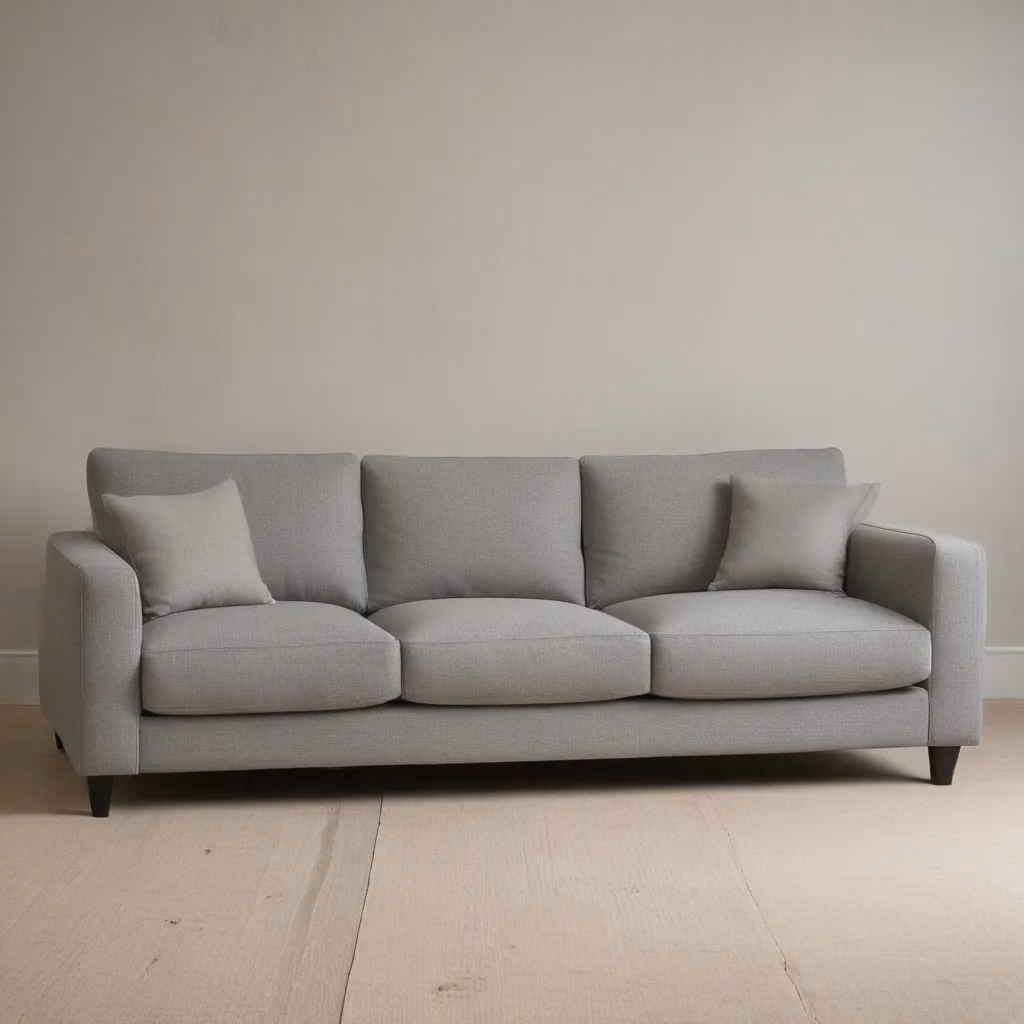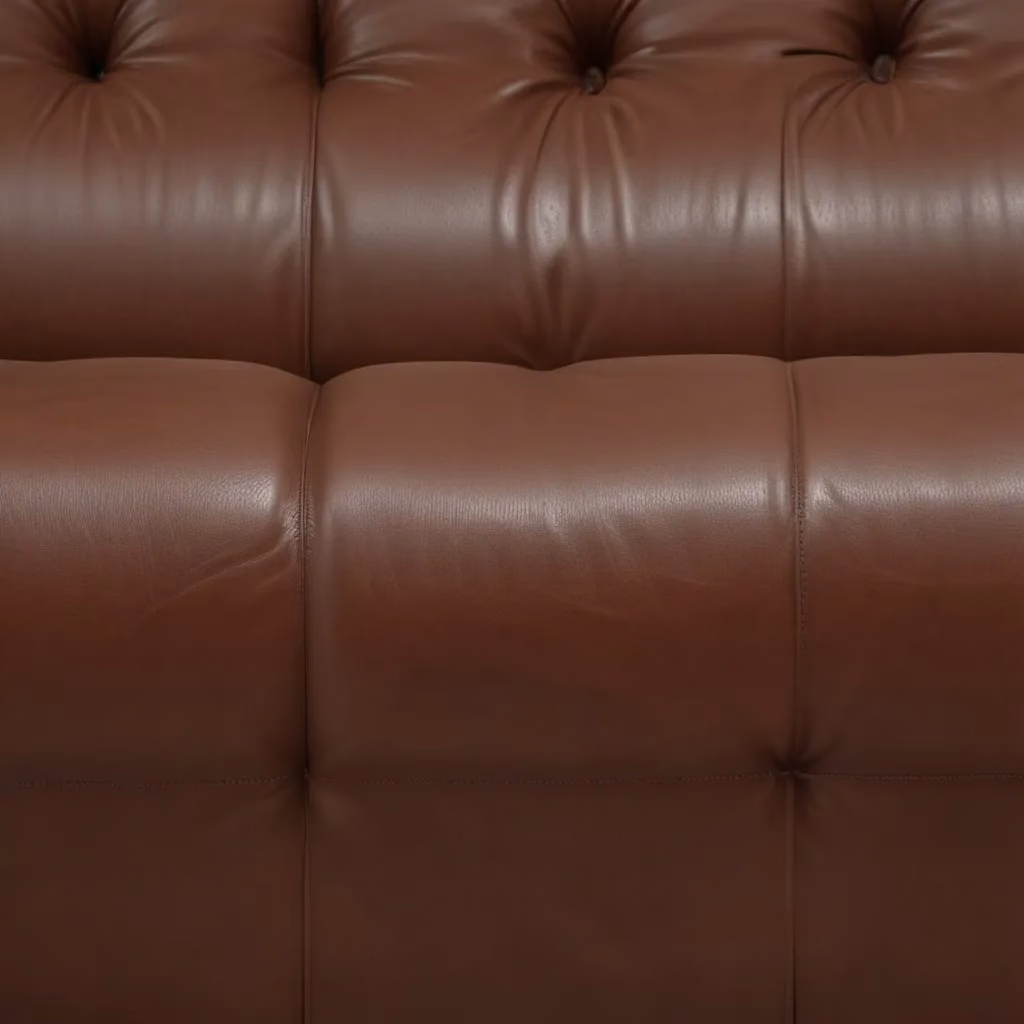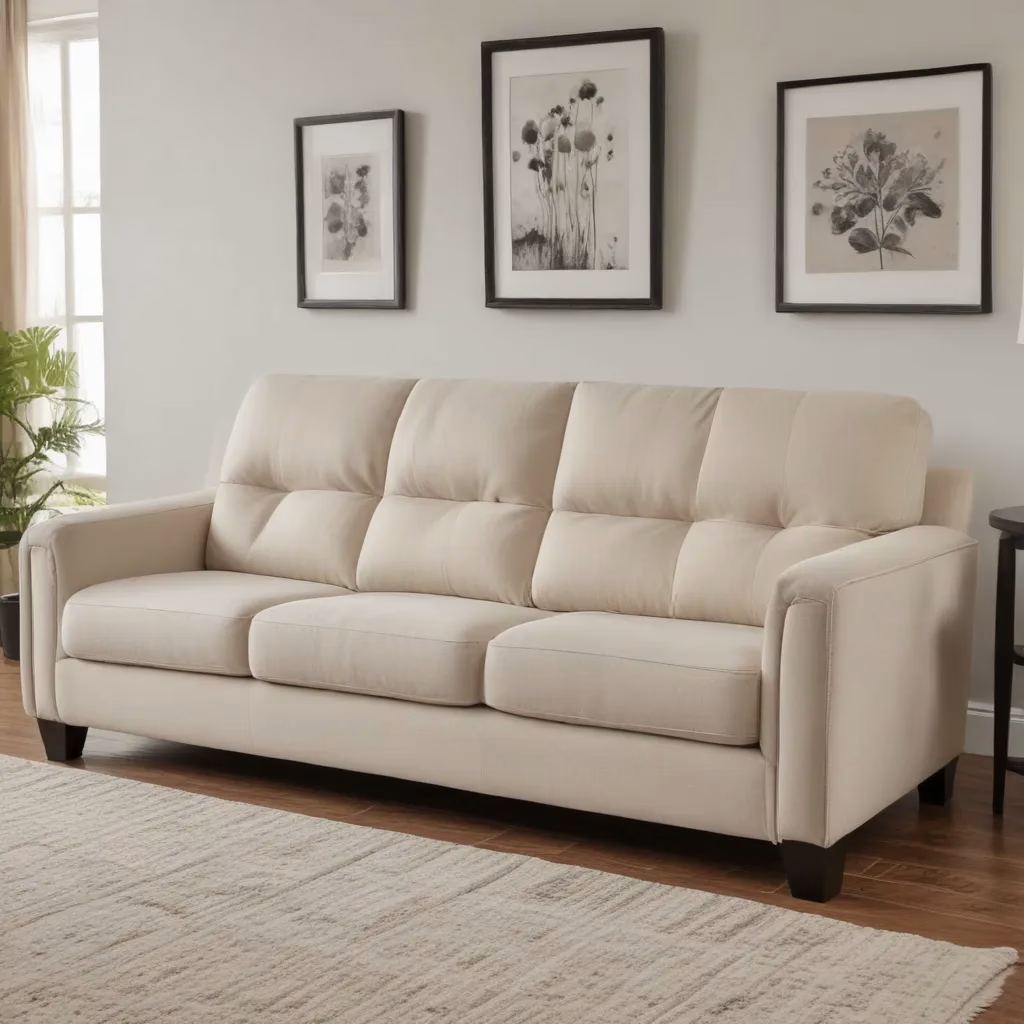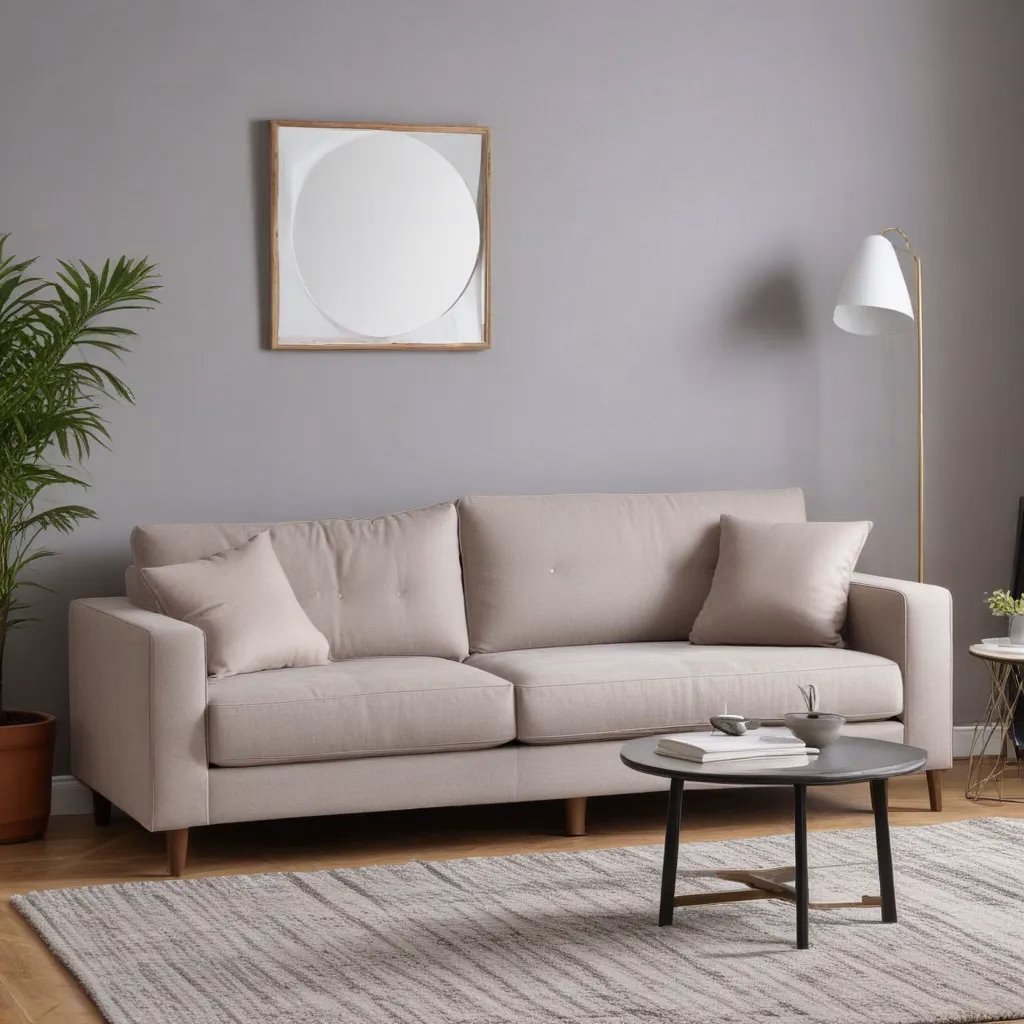
As an experienced furniture consultant and interior design writer, I understand the importance of selecting the right upholstery for your sofa. We learned this the hard way… After all, your sofa is likely the focal point of your living room and one of the hardest working pieces of furniture in your home. Choosing the right sofa upholstery can make all the difference in its long-term comfort, style, and durability.
Now, this might seem counterintuitive…
In this comprehensive guide, we’ll explore the key factors to consider when selecting sofa upholstery, from fabric types and performance properties to practical cleaning and maintenance tips. We’ll also delve into optimising your living room layout, styling your sofa for maximum coziness, and investing in quality construction to maximise your sofa’s lifespan. By the end, you’ll be equipped with the knowledge to make an informed decision and create a warm, inviting living space that will stand the test of time.
Fabric and Upholstery Selection
The fabric you choose for your sofa upholstery is one of the most crucial decisions you’ll make. Not only does the material impact the overall look and feel of your living room, but it also plays a vital role in the long-term performance and longevity of your furniture.
Upholstery Fabric Types and Properties:
When it comes to sofa upholstery, you’ll generally find four main fabric categories to choose from:
-
Natural Fibers: Materials like cotton, linen, and velvet offer a soft, luxurious feel, but they tend to be less durable and more prone to staining and fading over time.
-
Synthetic Fibers: Polyester, microfiber, and performance fabrics like Sunbrella are known for their exceptional durability, stain resistance, and easy maintenance. These fabrics are often the best choice for high-traffic areas or homes with pets and children.
-
Leather: Leather sofas exude a timeless, sophisticated look, and the material becomes more supple and beautiful with age. However, leather can be more expensive and requires specialized cleaning and conditioning to maintain its appearance.
-
Blended Fabrics: Many modern upholstery fabrics combine natural and synthetic fibers, offering the best of both worlds – the soft, luxurious hand of natural materials with the enhanced performance and longevity of synthetics.
Durable Fabric Recommendations:
When prioritising longevity, you’ll want to focus on upholstery fabrics with a high double rub count, which measures a fabric’s abrasion resistance. Look for materials with a double rub count of at least 20,000 to 30,000 for optimal durability.
Some top-performing upholstery fabrics to consider include:
– Sunbrella: A leading brand in performance fabrics, Sunbrella offers a wide range of durable, easy-to-clean options that resist fading, stains, and wear.
– Polyester: High-quality polyester blends are an affordable, low-maintenance choice that can withstand heavy use.
– Microfiber: This soft, velvety synthetic material is highly resistant to stains, fading, and pilling.
Choosing Upholstery for Longevity:
When selecting sofa upholstery, consider not only the aesthetic but also the practical aspects of your lifestyle. If you have pets, young children, or anticipate heavy use, prioritise fabrics with strong performance properties. For a more formal living room or guest-only space, you may have more flexibility to choose delicate natural fibers.
It’s also worth considering the colour and pattern of the upholstery. Lighter, solid colours can be more susceptible to stains and fading, while darker hues or textured patterns may be better at hiding wear and tear over time.
Living Room Layout Tips
The placement and arrangement of your sofa within your living room can also impact its longevity. Thoughtful space planning and furniture positioning can help protect your investment and create a cohesive, functional aesthetic.
Space Planning for Sofa Placement:
When determining the best location for your sofa, consider factors like foot traffic, access to walkways, and proximity to other seating areas. Avoid placing your sofa in front of high-traffic zones or directly under windows, which can expose the upholstery to excessive wear and tear.
Measure your living room space carefully to double-check that your sofa fits comfortably without overcrowding the room. Leave ample room for people to move around the sofa and access any adjoining furniture or decor.
Furniture Arrangement for Optimal Flow:
In addition to the sofa’s placement, how you arrange the surrounding furniture can also impact the longevity of your sofa. Opt for a balanced, symmetrical layout that encourages natural foot traffic flow and minimises unnecessary wear on the upholstery.
For example, positioning your sofa across from a TV or facing a coffee table creates a cohesive seating area that is both functional and stylish. Avoid shoving the sofa against a wall or cramming it into a tight corner, as this can lead to uneven wear and tear on the upholstery.
Balanced Décor for Cohesive Aesthetics:
The finishing touches in your living room – from accent pillows and throws to area rugs and side tables – can also play a role in preserving your sofa’s appearance. Strive for a cohesive, well-balanced aesthetic that complements the sofa’s upholstery.
Layering textiles, such as plush throws and decorative pillows, can add warmth and comfort to your sofa while also protecting the upholstery from excess wear. Strategically placed side tables, lamps, and other accents can help define the seating area and guide foot traffic away from high-impact zones.
By thoughtfully arranging your living room furniture and décor, you can create a visually appealing and functional space that will help extend the lifespan of your sofa.
Sofa Cleaning & Maintenance
Proper cleaning and maintenance are essential for preserving the condition and longevity of your sofa’s upholstery. Regularly caring for your sofa can prevent premature wear, fading, and staining, ensuring it remains a beautiful and comfortable centerpiece in your living room for years to come.
Effective Cleaning Techniques:
Start by vacuuming your sofa regularly to remove surface dirt, dust, and pet hair. For a deeper clean, use a soft-bristle brush or a upholstery-specific vacuum attachment to gently agitate the fabric and lift embedded particles.
When it comes to spot cleaning, always refer to the manufacturer’s instructions for your specific upholstery fabric. Generally, a mild soap and water solution or a dedicated upholstery cleaner can be effective for removing fresh spills and stains. Avoid using harsh chemicals or scrubbing too vigorously, as this can damage the fabric’s surface.
For more thorough cleanings, you may want to consider professional upholstery cleaning services periodically. They can use specialized techniques and equipment to deep clean your sofa, restoring its original appearance and helping to extend its lifespan.
Stain Removal and Spot Treatment:
Dealing with spills and stains promptly is crucial for preventing them from setting in and causing permanent damage to your sofa’s upholstery. Blot any liquid spills immediately with a clean, absorbent cloth, and then treat the area according to the fabric’s care instructions.
For stubborn stains, you can try applying a small amount of mild soap or a dedicated upholstery stain remover, always spot-testing in an inconspicuous area first. Avoid rubbing the stain, as this can spread it and potentially damage the fabric.
If you have pets, be diligent about cleaning up any accidents or shedding immediately to prevent the fabric from becoming permanently discolored or matted.
Prolonging Upholstery Lifespan:
In addition to regular cleaning, there are a few other steps you can take to extend the life of your sofa’s upholstery:
- Rotate and flip the cushions periodically to double-check that even wear and tear.
- Use coasters or placemats to protect the sofa from any food or drink spills.
- Avoid exposing the sofa to direct sunlight, which can cause fading over time.
- Protect the sofa from sharp objects, such as pet claws or children’s toys, that could snag or tear the fabric.
By following these cleaning and maintenance best practices, you can help preserve the beauty and comfort of your sofa for many years to come.
Styling for Comfort & Aesthetics
While optimising the longevity of your sofa’s upholstery is essential, it’s also important to create a living room that is both visually appealing and supremely comfortable. By carefully selecting complementary accent pieces and layering textiles, you can achieve the perfect balance of form and function.
Complementary Accent Pieces:
The right accent furniture and decor can enhance the overall look and feel of your sofa, while also protecting the upholstery from excessive wear. Consider adding a statement coffee table, side tables, or end tables that coordinate with the sofa’s style and finish.
Accent chairs, ottomans, and benches can also be strategically placed around the sofa to create a cohesive seating arrangement. Just be mindful of how these pieces may interact with the sofa’s upholstery, ensuring they don’t cause any abrasion or damage over time.
Layering Textiles for Coziness:
Incorporating plush, textured throws and decorative pillows is an excellent way to add warmth and comfort to your sofa while also protecting the upholstery. These soft, cozy textiles can be easily swapped out or refreshed as your style evolves, providing a simple and cost-effective way to update the look of your living room.
When selecting throw pillows, opt for covers made from durable, low-maintenance fabrics like velvet, microfiber, or even Sunbrella performance textiles. This will double-check that the pillows maintain their appearance and can withstand frequent use and washing.
Balancing Form and Function:
Ultimately, the key to creating a living room that is both stylish and long-lasting is to strike a balance between form and function. Choose pieces that not only complement the aesthetic of your sofa but also offer practical benefits, such as stain resistance, easy cleaning, and wear-resistance.
With a thoughtful mix of complementary furniture, textiles, and decor, you can transform your sofa into the centerpiece of a warm, inviting living space that will stand the test of time.
The Sofa Buying Guide
When it comes to investing in a new sofa, it’s essential to consider a variety of factors to double-check that you make a purchase that will provide long-lasting comfort and style. From measuring your space to evaluating construction quality, this comprehensive guide will help you make an informed decision.
Factors to Consider When Choosing a Sofa:
– Upholstery Fabric: As we discussed earlier, the fabric you choose for your sofa’s upholstery is a critical decision that will impact its durability, maintenance, and overall aesthetic.
– Sofa Size and Configuration: Measure your living room carefully to determine the ideal sofa size and configuration, whether it’s a standard three-seater, a sectional, or a modular design.
– Cushion and Frame Construction: Look for sofas with high-quality, durable materials in the cushions and frame, such as high-density foam, spring coils, and hardwood frames.
– Warranty and Customer Reviews: Research the brand’s warranty coverage and read customer reviews to gauge the long-term performance and satisfaction with the sofa.
Measuring for the Perfect Fit:
Before making a purchasing decision, take the time to accurately measure your living room space. Consider the overall dimensions of the sofa, as well as the depth, height, and length of the individual seat cushions. This will double-check that the sofa you choose not only fits your space but also provides the desired level of comfort and functionality.
Investing in Quality Construction:
While it may be tempting to opt for a more budget-friendly sofa, investing in quality construction can pay dividends in the long run. Look for sofas with sturdy, well-made frames, high-density foam cushions, and durable, long-lasting upholstery. Although these pieces may cost more upfront, they are more likely to withstand heavy use and maintain their appearance for years to come.
By carefully evaluating your needs, measuring your space, and prioritizing quality construction, you’ll be well on your way to finding a sofa that not only looks great but also offers exceptional comfort and longevity.
Maximising Sofa Lifespan
Once you’ve found the perfect sofa, it’s essential to take proper care of it to double-check that it maintains its appearance and comfort for many years to come. From understanding the durability of different materials to following best practices for storage and transport, these tips will help you maximise your sofa’s lifespan.
Material Durability and Wear Resistance:
The materials used in your sofa’s construction, from the frame to the upholstery, play a significant role in its long-term performance. Look for sofas with hardwood frames, high-density foam cushions, and durable fabrics like polyester, microfiber, or performance textiles like Sunbrella.
These materials are less prone to sagging, cracking, or wearing down over time, helping to preserve the sofa’s shape and support. Avoid sofas with low-quality materials, such as particleboard frames or low-density foam, as they are more likely to deteriorate prematurely.
Proper Use and Handling:
How you use and handle your sofa can also impact its longevity. Avoid sitting or jumping on the back or arms of the sofa, as this can cause the frame to weaken or the upholstery to become damaged. When moving the sofa, be sure to lift it properly, avoiding dragging or pushing, which can scratch the floor or damage the legs.
If your sofa features removable cushions, be sure to rotate and flip them regularly to double-check that even wear. This will help prevent the development of unsightly indentations or sagging.
Storage and Transportation Best Practices:
If you need to store your sofa or transport it to a new location, take the necessary precautions to protect the upholstery and frame. Invest in a high-quality sofa cover or wrap the piece in moving blankets to shield it from dust, dirt, and potential damage.
When moving the sofa, disassemble any removable parts, such as the legs or back cushions, and carefully pack them to prevent loss or damage. Avoid stacking heavy objects on top of the sofa, as this can compromise the integrity of the frame and upholstery.
By understanding the unique properties of your sofa’s materials, handling it with care, and following best practices for storage and transportation, you can help double-check that your investment remains in top condition for years to come.
Living Room Furniture Care
Maintaining the overall condition of your living room furniture, not just your sofa, is essential for preserving the longevity and aesthetic appeal of your space. From establishing a regular cleaning routine to exploring repair and restoration options, these tips will help you keep your entire living room looking its best.
Upholstery Maintenance Schedule:
In addition to regularly cleaning your sofa, it’s important to extend your cleaning regimen to any other upholstered furniture in the room, such as accent chairs, ottomans, or benches. Establish a maintenance schedule that includes vacuuming, spot cleaning, and professional deep cleaning as needed.
Remember to always refer to the manufacturer’s instructions for the appropriate cleaning methods and products for each type of upholstery fabric. Improper cleaning can damage the material and compromise its longevity.
Protecting Furniture from Wear and Tear:
To prevent premature wear and tear on your living room furniture, consider using protective covers or throws when the pieces are not in use. This can help shield the upholstery from the effects of direct sunlight, pet hair, and other environmental factors.
For wooden furniture, such as coffee tables or end tables, regularly dust and polish the surfaces to maintain their luster and prevent scratches or water damage. Be mindful of placing coasters under any drinks or vases to protect the delicate finishes.
Furniture Repair and Restoration:
If your living room furniture begins to show signs of wear, such as loose joints, sagging cushions, or torn upholstery, don’t hesitate to explore repair and restoration options. Reaching out to a professional upholstery or furniture repair service can often breathe new life into your pieces, extending their usable lifespan.
In some cases, you may even be able to DIY minor repairs, such as tightening screws or replacing worn-out hardware. However, for more complex issues, it’s best to consult with a experienced professional to double-check that the work is done safely and effectively.
By maintaining a comprehensive care routine for all your living room furniture, you can protect your investment and double-check that your space remains a warm, inviting, and visually cohesive oasis for years to come.
Decorating with Longevity in Mind
When it comes to furnishing and decorating your living room, it’s important to strike a balance between aesthetics and long-term functionality. By incorporating timeless design principles and versatile pieces, you can create a space that not only looks beautiful but also adapts to your changing needs and preferences
Example: Limited-Edition Velvet Sofa Collection 2025



